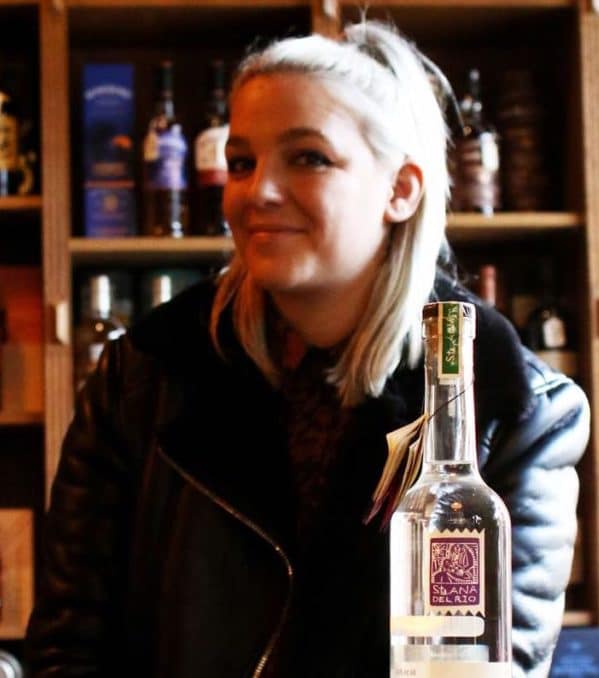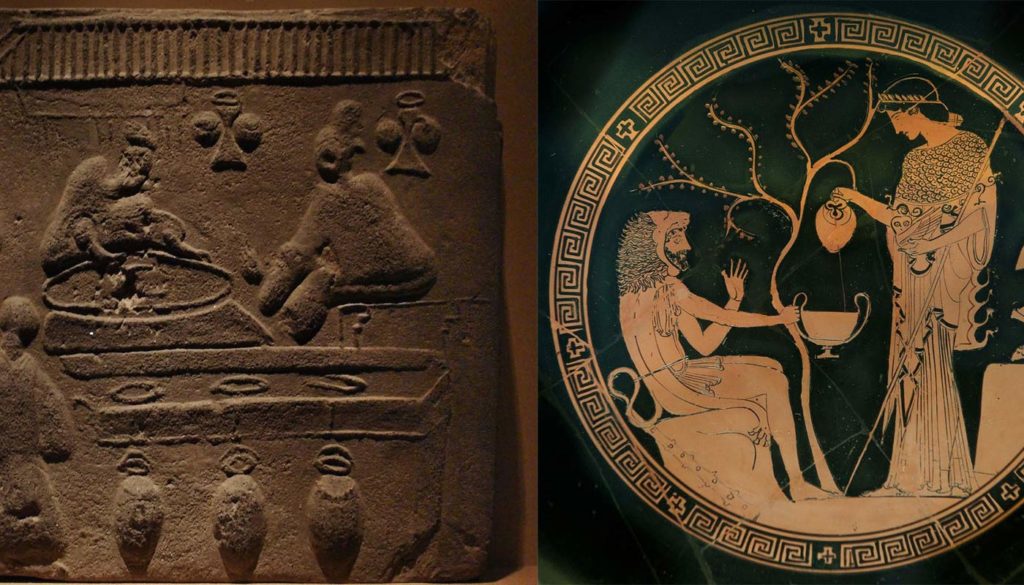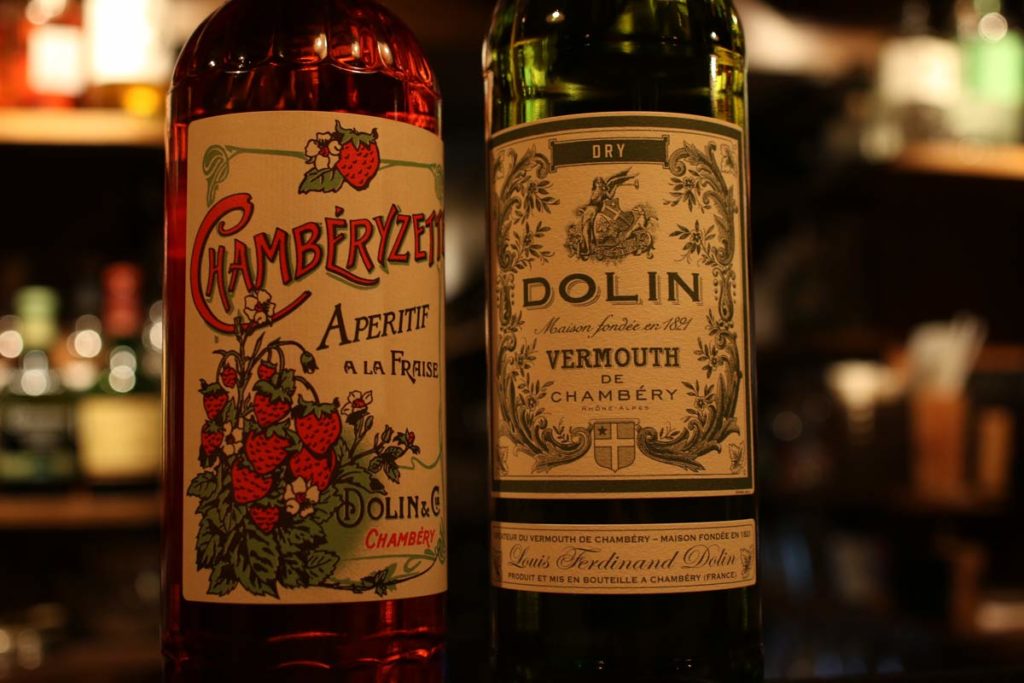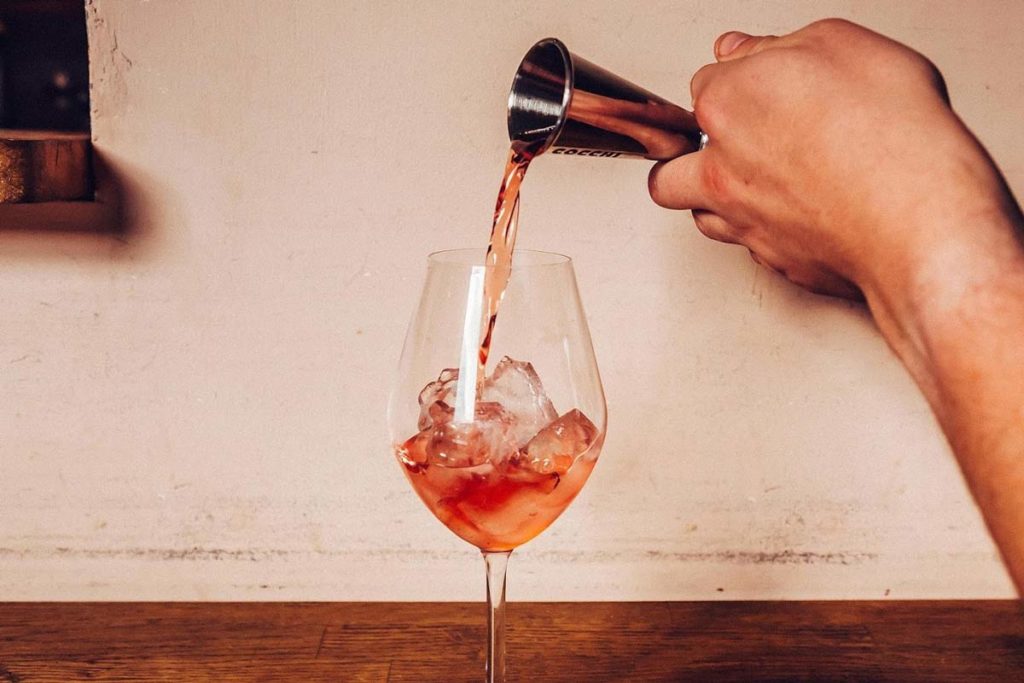Claire Best Interview - Fortified Wines, the Future, and Gin's Scandi Cousin
We sat down with Claire Best to talk history, perfect serves, strange maturation methods, and much more.

We sat down with Claire Best, the leading authority on all things Gin, Vermouth & European Spirits-related over at Amathus, for a fascinating deep-dive into the history of Vermouth & Akvavit – ‘gin’s Scandi cousin’. We talked history, perfect serves, strange maturation methods, and much more. Have yourself a read on your 10 minutes off.

Claire Best – Amathus Brand Sales Manager for Gin, Vermouth & European Spirits
Right off the bat, tell us your name and your role within Amathus?
Hi, my name is Claire Best and I work for Amathus Drinks looking after Gin, Vermouth and European spirits – and, recently, Aquavit.
So let’s start from the start. How did you get into the drinks industry to begin with?
I started working in hospitality since I was about 15 in Burger King. I then moved on to working in some proper dodgy boozers up in Hull. I went to uni because I knew I really didn’t want to work in these places! Studies completed, I worked my way up at The Harley in Sheffield which was this sort of club, bar, hotel, restaurant hybrid. The Harley had a sister which did cocktails. I kind of always wanted to learn how to make cocktails, I found it all really interesting, and it’s a skill I didn’t have. So I joined to learn something new and I eventually left aged around 25 to go and manage my own bar. So my cocktail making ability is somewhat self-taught, but then I’ve also definitely had some outside help along the way!
Let’s talk a bit about a couple of your passions, then – Akvavit and Vermouth. Before we go into the current state of things, talk us through each of them in layman’s terms – how are they made? What is some of their history? Where are they found? etc.
Vermouth falls under the bracket of ‘aromatised wine’. Realistically, there are only two types of Vermouth: the dry and French, and the sweet and Italian, but of course the Italians can make dry, and the French can make sweet. Vermouth, legally, has to be 75% wine, it has to be fortified, at least 14.5% ABV, and no more than 21%. Most importantly, it’s always infused with botanicals – and one botanical is always wormwood, which looks a bit like a weed and gives the liquid a bitter flavour.
You’ve realistically only got two Vermouths with an appellation – Vermouth de Chambery, or Dolin, which is one of mine, and then you have Vermouth di Torino, which is essentially Cocchi. The first one on the market was officially Carpano – Cinzano argue otherwise – but basically it wasn’t actually the Italians that came up with Vermouth. It was the Greeks before them, who used it mainly for medicinal purposes. They were initially fortifying their wine for flavour, not necessarily just because it was going off, but they soon realised that some of the things they were putting into it were actually good for you. Although you have to take these claims with a pinch of salt, because often they followed the same logic as juniper being the cure for the bubonic plague. So, they’d put all this stuff in there and claim it’ll get rid of wind, or help with your sex drive, and all this kind of stuff! But before the Greeks the Chinese were fortifying their wine, and the Egyptians before them, so it’s a category that has ancient roots.

Fortified wine goes WAY back. (left) Pictorial brick depicting the making of wine, Eastern Han Dynasty, A.D. 25 – 220. (right) Athena pours wine into Hercules’ (rather large) cup, approx B.C. 470.
“They’d put all this stuff in there and claim it’ll get rid of wind, or help with your sex drive, and all this kind of stuff!”
What about Akvavit?
Akvavit or Aquavit is basically what I like to call gin’s Scandi cousin (laughs). Essentially it can only be made with agricultural ethanol, which means that it can’t be synthesised. It’s often drunk alongside food, around Easter, Midsummer and Christmas, it’s usually for a celebration. It has to taste of either dill or caraway, and the reason I like to call it gin’s Scandi cousin is because they’re two spirits that are legally defined by their tastes. So, gin has to taste like juniper and Akvavit has to taste like dill or caraway. Akvavits come from all over Europe but seldom comes from anywhere else but Sweden, Denmark or Norway. Swedish akvavits tend to be unaged, a little bit lighter, and a little bit fresher. Norwegian akvavits are heavily influenced by whisky production, so they’re almost always aged and are made from potato.

Some Swedish gentlemen enjoy a glass of Akvavit, early 20th century.
Tell us a bit about the particular brands of Vermouths and Akvavits you look after and how they stand out from the crowd.
Dolin is probably our flagship Vermouth, if you like, and it’s used worldwide. Probably the reason for this, and it’s definitely the reason I used it so much as a bartender, is that it’s cheap and nice, you know what I mean? (laughs). The dry is pretty much perfect for Martinis. It’s really dry at only 33% sugar, it’s really floral, really vegetal, and for that reason it works almost perfectly alongside gin. Dolin also invented blanc Vermouth – which is essentially dry Vermouth with extra sugar – and they were also the first Vermouth producers with an appellation. They also have Chamberyzette, strawberry Vermouth, which is probably the most delicious liquid on the face of the Earth in my eyes!
Outside of Dolin, we also have Otto’s, which is a Greek Vermouth from the two guys who own The Clumsies, Nikos and Vasilis. Otto’s is essentially a Rose Vermouth and it doesn’t really behave like a sweet because it’s got things in there like olive leaf, oregano, it’s got rose petals, and some Madagascan vanilla. The wine comes from the Nemea region in Greece and it’s honestly outstanding, probably one of the best Vermouths I’ve tasted. But, at the same time it doesn’t really fall into the category of sweet. It’s basically a standalone product. It goes really well with anything really green, like tequila, mezcal, cachaça, pisco, things like that.
And then we’ve also got Contratto, which is from Italy. Fun fact: Contratto was actually the official bubble supplier to the Vatican in the 1930’s. Other than Vermouth, they also make a bitter and an aperitif. Their branding is beautiful, but I also think it’s important to note that it’s completely natural and vegan-friendly. Increasingly, the latter is a question that gets asked a lot and does have quite a big impact on people’s drinking habits – you know, it’s one thing when you can’t eat something but a whole other thing when you can’t enjoy a cocktail! But yeah, the aperitif is this bright orange colour and it’s flavoured with carrot and saffron and it’s really beautiful. And the bitter behaves like a Campari – it’s flavoured with sage, cloves, juniper, hibiscus, and has an amazing colour. Also falling into the category of aperitif wine, we have Cap Mattei – an amazing quinquina from Corsica. They have a blanc and a rouge and both are delicious. The blanc has a nose of tropical fruits its just fantastic, whilst the rouge is outstanding mixed with spirits such as Calvados and Cognac in particular.

Amathus’ flagship Vermouth, Dolin, was the first Vermouth with an appellation.
And so how long have you been working with Vermouth and Akvavit? Are they something that you developed an affection for after you got into the industry, or have you always been an avid fan?
No, I think anyone who first stepped behind a bar when they were young would have discovered that bottle of Martini on the back bar and wouldn’t have known what to do with it. It wasn’t really until I started cocktail bartending and had people asking me for Martinis and Manhattans that I really knew what it was and started exploring and using it. But yeah, I’d definitely say my relationship with Vermouth goes way further back than the one I share with Akvavit. Akvavit, for me, is actually relatively new because I came from a kind of different background where I never really got the chance to play around with it all that much.
When I was working at Callooh Callay we used it in a couple of drinks there. We actually used one of the Akvavits I now look after, Aalborg, in a twist on a Woo-Woo which I thought was absolutely delicious. One of our guys at Amathus sadly left not too long ago, and then I basically just turned around to my boss and just said ‘can I have it?’ because it’s a category I’ve found very interesting and, as the saying goes, ‘if you don’t ask, you don’t get’. We’ve actually been importing it for around 15 years now, Amathus was one of the first to bring it into the UK and we’ve got some really great stuff in the category. For example, O.P. Anderson is Sweden’s oldest and probably most popular Akvavit Linie, from Norway, is aged at sea and spends four months in sherry casks dotted around the ocean, and then we have Aalborg from Denmark. When I first started, I didn’t actually know all that much about them, so you’re naturally inclined to ask questions and learn as you go. But yeah, I basically just nicked it (laughs).
So, a bit like other more obscure categories like Mezcal, Akvavit and Vermouth have been going through something of a renaissance in recent years. In your opinion, what factors do you think have been driving this growth and added interest?
Bobby Hiddleston once said when he was at Callooh Callay that the most effective way to grow a spirit category and drive awareness is to stick it in a cocktail, and for me he’s totally right. You know, it’s unlikely that somebody is going to walk in off the street and say: ‘Excuse me, can I see your Akvavit selection?’ or ‘What Vermouths have you got?’. But when you start putting them into drinks and putting them on menus, people are naturally inclined to start talking about them.
Bartenders will always be interested in something new, something different, something they can experiment with and impose their own style on – they really just want to play around with flavours. Also, I think that consumers palates are starting to evolve. They’ve started ordering Negronis, Martinis and Manhattans. I definitely wasn’t doing it for a LONG time, I don’t think I ordered my first Old Fashioned until I was about 25? Then I think another factor is that they are really starting to be pushed by spirit companies themselves – for example, Pernod have just released their own Akvavit, Maverick has just released an Akvavit which is amazing. So you also have companies like that which are pushing the categories along and broadening people’s horizons in the process. Despite this, though, most of the credit still has to go to the bartenders because of their passion for what they do.
“Bobby Hiddleston once said when he was at Callooh Callay that the most effective way to grow a spirit category and drive awareness is to stick it in a cocktail, and for me he’s totally right.”

Demand for classic cocktails like the Negroni has multiplied in recent years.
Traditionally these are drinks that have been consumed neat in the past, but increasingly they’re finding themselves on the speed rails of mixologists country-wide. What type of serves are these liquids most comfortable in? In what surroundings do their interesting taste profiles work best?
Vermouth, for me, is always most at home in the classics because it was one of the most commonly used products back in the early days of cocktail bartending. Back then they didn’t have things like pineapple juice, for example, because things like that were expensive. So yeah, for me Vermouth is always best in a classic cocktail, that’s just how I see it. Obviously that’s not to say that you can’t use it in modern classics too, or for your own signature or whatever, but that’s just where I feel it’s most comfortable.
Akvavit is a little different. We obviously don’t have the same drinking culture and behaviours as the Scandinavians do. For instance, in the same way the Dutch drink Jenever and the English haven’t really gotten on board with it. So, there’s always a bit of a translation process when you bring something like that to the UK. For me, though, most aged spirits like Akvavit work very similarly to whisk(e)y – especially the Norwegian varieties like Linie. You know, it’s supposed to be served at room temperature, it’s intended to be served in a tulip glass and served neat. But you also have Akvavits that have crazy flavour profiles, too. Like there’s one from O.P. Anderson that’s an apple and Kümmel Akvavit. You’re actually not allowed to technically call it an Akvavit, because it’s been sweetened, but it has Akvavit at its base, it’s incredible stuff. But yeah, I’d definitely say the unaged stuff like that is much better suited to a mixed drink rather than neat. Or Aalborg Dild and Tonic, it’s a refreshing twist on a traditional G&T.
“Vermouth is always best in a classic cocktail, that’s just how I see it.”
All-time favourite serve?
I’ve got to give a shout out to the Naked and Famous, which is essentially equal parts mezcal, lime, yellow Chartreuse, and Aperol. It’s pink and delicious and boozy. It does depend on the mezcal you use though – we used one before when I worked at Milk & Honey that was so smoky that it was just too much. But if you get your hands on some that just dials back the smoke a little bit, it makes a tasty drink. For Aquavit, it’s a drink called The Trident, which is equal parts Linie Aquavit, dry sherry and Cynar and two dashes of peach bitters. For Vermouth, my all-time favourite drink would be a 2:1 Martini with Hven Organic Gin and Dolin Dry Vermouth.
Pick from our shelves? (outside of your portfolio!)
Well I’m not entirely sure if you have it on your shelves, but one I definitely have to mention is Maverick’s new ‘Aquavit’ and it’s honestly one of the nicest things I’ve tried in ages. Then in terms of mezcal the whole Del Maguey range is fantastic, especially the Chichicapa.

Quite a tough choice..
Any plans for future collaboration with TT?
ALWAYS. I am excited to hear about the roof terrace opening. The space you guys have upstairs is fantastic also. I will definitely have a think!

